#bleach florigraphy
Text
Bleach Hanakotoba Analysis Part 3 ~ OP16: Scar &
ED31: Saihate

○●○●○●○●○●○●○●○●○●○●○●○●○●○
-> Division 01: Chrysanthemum
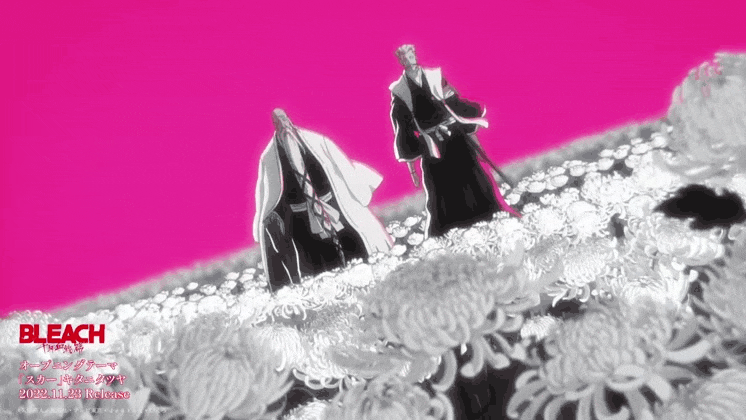

The flower insignia of the 1st division is the chrysanthemum (Chrysanthemum morifolium) which is known as kiku (菊) in Japanese. According to the official Bleach lore, this flower signifies truth and innocence. Its meanings in hanakotoba include nobility, virtuousness, perfection, rejuvenation, longevity and good luck. A sixteen-petalled chrysanthemum is not only one of Japan’s two unofficial national flowers but is also used on Japan’s imperial seal. In Western floriography, Chrysanthemums symbolise cheerfulness, devoted love, loyalty, happiness longevity, joy, trust, optimism, fidelity and friendship. In some cultures, Chrysanthemums—particularly white ones—are only associated with mourning, sympathy and death.
-> Division 02: Pasque flower
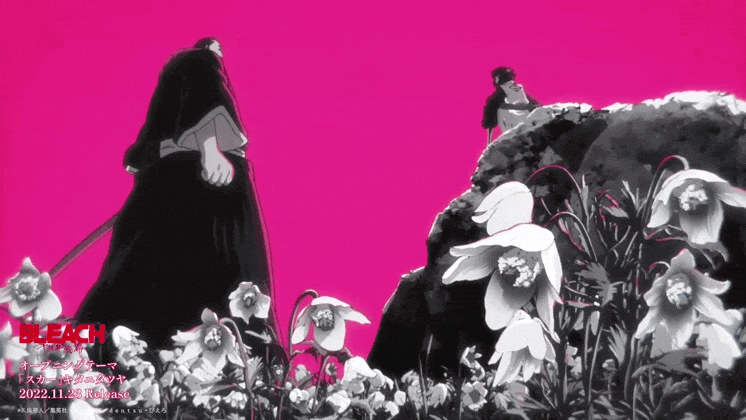
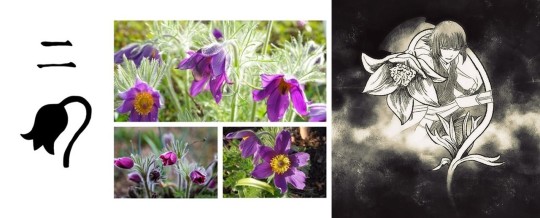
The flower insignia of the 2nd division is the Pasque flower (Pulsatilla) which is also known as the nodding anemone and wind flower. It is called the okinagusa (翁草) in Japan. According to the official Bleach lore, this insignia means “seeking nothing”. Its additional meanings in hanakotoba include “untold love”, “pure heart”, and “love of betrayal”. The downward flower of the Pasque flower is said to have given rise to it symbolising "untold love" and "pure heart" as this is thought to mirror the feelings of a pure girl who is ashamed of her sentiments and finds it difficult to express them. The Pasque flower's symbolic meaning of a "love of betrayal" stems from the fact that after reaching their peak, the flowers that initially bloom face downwards turn upward. In Western floriography, the Pasque flower represents rebirth, renewal, hope, dignity, nobility, grace and the phrase “forsaken in love”.
-> Division 03: Marigold
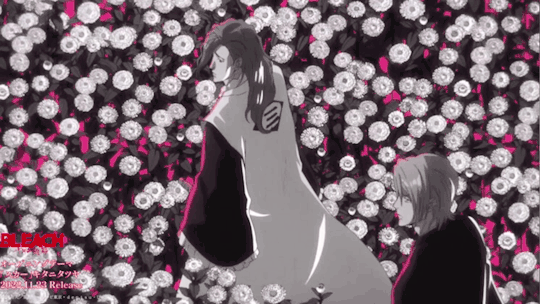

The flower insignia of the 3rd division is the marigold (Tagetes) which is known as the marīgōrudo (マリーゴールド) in Japanese. According to the official Bleach lore, this flower signifies despair. Its meanings in hanakotoba include jealousy, despair and sadness. In Western floriography, they symbolise grief, despair, and jealousy as well as the expression of deep feelings and passion.
-> Division 04: Bellflower
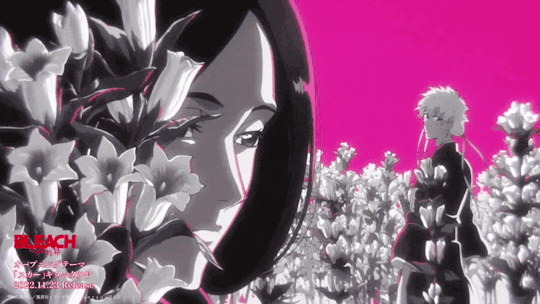

The flower insignia of the 4th division is the bellflower (Campanula) which is known as the berufurawā (ベルフラワー ) and otome kikyo (乙女桔梗 ) in Japan. According to the official Bleach lore, this flower signifies that “those who grieve are loved”. Its meanings in hanakotoba include gratitude, sincerity and pleasant chatter. Bellflowers are a symbol of gratitude, constancy, romance, and support in Western floriography. Additionally, bellflowers can stand for affection, delicacy, humility, and everlasting love. In particular, blue bellflowers are symbolic of peace, healing, openness, tranquility, and friendship—on the other hand, cream bellflowers are symbolic of thoughtfulness, grace, elegance, peace, and hope. Given that a bellflower's shape resembles a church bell, it is believed that the flower's symbolic meanings of gratitude and sincerity originate from church teachings. It is thought that the bellflower's symbolic meaning of pleasant chatter originates from the observation that its flowers which point diagonally upward bloom together giving the impression that the small flowers are merrily conversing with one another.
-> Division 05: Lily of the Valley


The flower insignia of the 5th division is the lily of the valley (Convallaria majalis) which is known as suzuran (鈴蘭) in Japanese. According to the official Bleach lore, this flower represents sacrifice, danger, pure love, humility and sweetness. Its meanings in hanakotoba include purity, humility, sweetness, chastity and finding happiness again. These flowers are symbolic of purity, humility, sweetness, rebirth, good fortune, joy, youth, discretion and a return of happiness in Western floriography. With its lovely, sweet aroma, it's difficult to believe that such a demure-looking flower could be dangerous. It is crucial to highlight, however, that this flower is an extremely toxic plant that, if consumed, can cause severe disease or death. The Lily of the Valley plant contains around 38 distinct cardiac glycosides (cardenolides)—which are a class of organic compounds that increase the output force of the heart and decrease its rate of contractions—that are exceedingly poisonous to both humans and animals. Given its toxicity, it's ironic, that the plant is associated with good fortune, purity, joy, and sweetness.
-> Division 06: Camellia
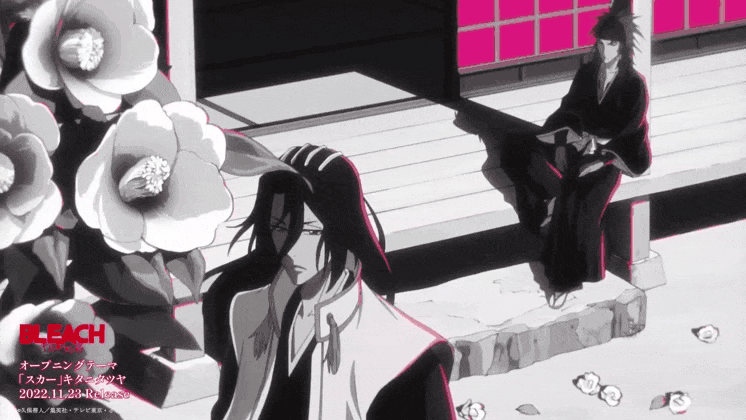
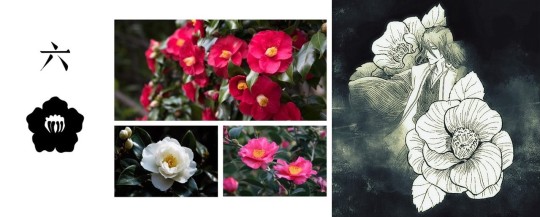
The flower insignia of the 6th division is the Japanese camellia (Camellia japonica) which is known as tsubaki (椿) in Japanese. According to the official Bleach lore, this flower represents “noble reason”. Its meanings in hanakotoba include modest kindness and pride. In Western floriography, camellias have a long-standing symbolic association with romance and devotion. They symbolize strong desire and passion as well as unfaltering love, devotion, affection, refinement, perfection, faithfulness, and admiration. Normally, the petals and calyx separate as a flower dies, but in the case of camellias, the petals and calyx fall together, preserving the entire flower. In recognition of this, camellias are used to represent longevity, perfection, and pure, unreserved, love that never fades. Red camellias are thought to represent romantic love, passion, or desire. Pink camellias convey feelings of longing and gratitude. White camellias are associated with purity, faithfulness, admiration, perfection, and good fortune. On the other hand, white camellias are regarded to bring bad luck in Japan since they are associated with death and mourning.
-> Division 07: Iris


The flower insignia of the 7th division is the iris (Iris japonica) which is known as ayame (菖蒲) in Japanese. According to the official Bleach lore, this flower signifies courage. Its meanings in hanakotoba include glad tidings, loyalty, messages, hope, graciousness as well and kindness of the heart. In Western floriography, they symbolise hope, faith, friendship, wisdom, royalty, valour and messages.
-> Division 08: Crane flower
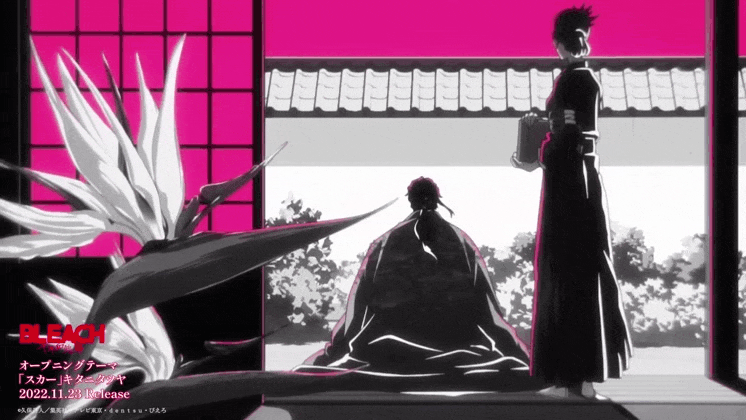
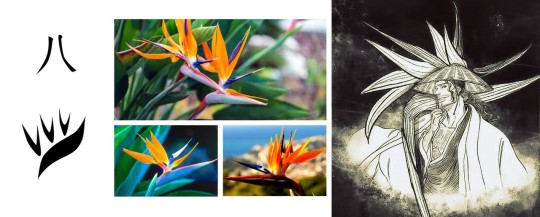
The flower insignia of the 8th division is the Crane flower (Strelitzia) which is also called the Bird of Paradise flower. In Japan, it is known as the Gokurakuchouka (ゴクラクチョウカ ). Its Japanese and English names are derived from the flower’s resemblance to a family of tropical birds native to New Guinea called Paradisaeidae. According to the official Bleach lore, this flower represents “everything that is obtained”. The phrases "date in love" and "pretentious in love" are its hanakotoba meanings. The exotic appearance of the flower, which is compared to a person in love, is considered to be the basis of these connotations. In Western floriography, the crane flower symbolizes magnificence, faithfulness, excellence, success and well as having joy in the face of both challenges and successes alike. Additionally, they also symbolize freedom due to the flower’s resemblance to a bird in flight. The Crane flower is native to South Africa where it holds the meanings of freedom, success, loyalty, thoughtfulness, immortality, love and optimism.
-> Division 09: White poppy
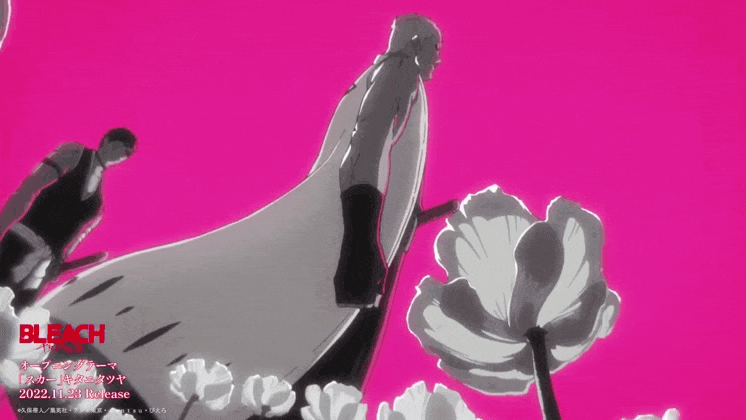
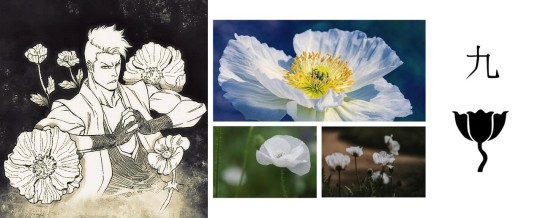
The flower insignia of the 9th division is the white poppy (Arctomecon merriamii) which is known as shiroi popī
(白いポピー) in Japanese. According to the official Bleach lore, this flower symbolizes oblivion. Its meanings in hanakotoba are sleep and oblivion. In Western floriography. White poppies represent sleep and peaceful rest. They are associated with faith and the concept of the soul's eternal life, and they also serve as a symbol of remembrance for deceased loved ones. Given that white flowers are symbolic of purity; white poppies are a symbol of restful sleep, pleasant dreams and renewal.
-> Division 10: Daffodil

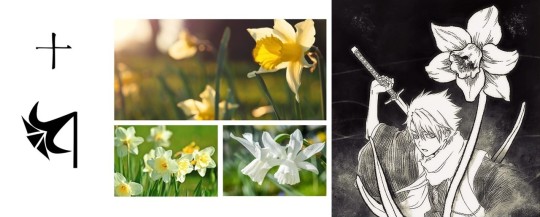
The flower insignia of the 10th division is the daffodil (Narcissus) which is known as suisen (水仙) in Japanese. According to the official Bleach lore, this flower signifies mystery and egoism. Its meanings in hanakotoba include self-love and self-esteem. Yellow daffodils in particular are linked to the phrases "come back to me" and "I want you to love me again." In English floriography, daffodils represent self-love, respect, egoism, and unrequited love. In contrast with the aforementioned negative connotations, daffodils also represent strength, overcoming hardships, and the arrival of success and wealth. White flowers typically symbolize purity—however white daffodils signify a desire for transformation.
-> Division 11: Yarrow
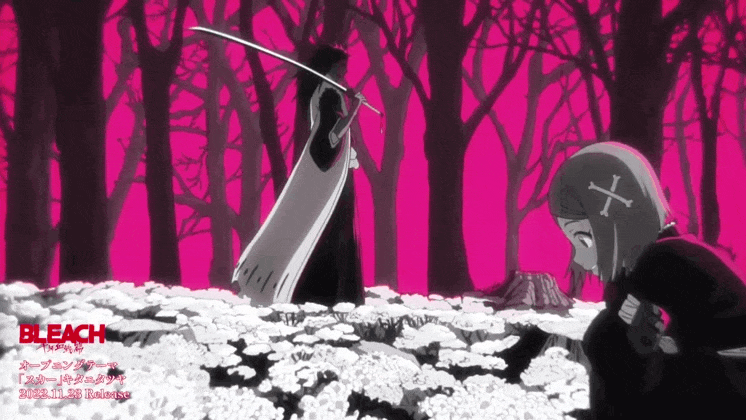

The flower insignia of the 11th division is the yarrow (Achillea alpina) which is known as nokogiri (鋸草) in Japanese. According to the official Bleach lore, this flower signifies fighting. Its additional meanings in hanakotoba include bravery and healing. The yarrow is a symbol of bravery in Western floriography, particularly in times of war, and wearing it is said to bestow courage and protection. The yarrow is also said to represent everlasting love, healing and good health because of its medicinal properties. Its Japanese name, “nokogiri”, translates to “saw grass” and is presumably derived from how the tooth-like shape of a saw’s teeth resembles the plant’s bipinnate/tripinnate leaves.
-> Division 12: Thistle

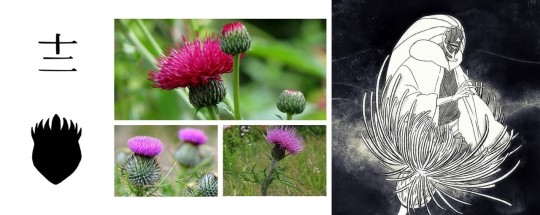
The flower insignia of the 12th division is the thistle (Cirsium spp.) which is known as azami (アザミ) in Japanese. According to the official Bleach lore, this flower signifies vengeance, strictness and independence. Its meanings in hanakotoba are independence, retaliation, sternness and “do not touch”. In western floriography, thistles symbolise austerity, nobility of character, independence and misanthropy. In the Victorian era, the gift of thistle flowers served as a warning against unwanted meddling. These flowers are incorporated in the expression “as prickly as a thistle” which describes someone who is easily enraged, particularly in the face of criticism. As Scotland’s national flower, thistles represent bravery, luck and strength. Thistles are referred to as the "flower of the sun" and the "herb of the witches" in the Basque area of France. It is said that thistles provide protection from evildoers and witchcraft because witches are said to be unable to look directly at the sun.
-> Division 13: Snowdrop


The flower insignia of the 13th division is the snowdrop (Galanthus nivalis) which is known as the sunōdoroppu (スノードロップ) and the matsuyukisou (待雪草) in Japan. According to the official Bleach lore, this flower represents hope. Its meanings in hanakotoba are hope and consolation. In Western floriography, the snowdrop represents purity, rebirth, sympathy and hope. A single snowdrop was seen by the Victorians as a symbol of death and was unlucky to bring into a home. On the other hand, the snowdrop is also associated with rebirth, springtime, and the ability to overcome life's challenges. The snowdrop blooms from mid to late January as winter slowly begins to end thereby reminding us that there is light at the end of the tunnel. It reminds us all that if we put our minds to it, we can achieve great things in life. It also serves as a reminder of change and represents a willingness to grow. Snowdrops are thus often gifted to those trying to move forward from sadness and negativity.
○●○●○●○●○●○●○●○●○●○●○●○●○●○
[If you liked this post, check out part 1 (here) and part 2 (here)... Also, here's the link to my directory of other hanakotoba analysis posts (here)]
[P.S. Here is the final part of my hanakotoba analysis on Bleach. I kept things brief and didn't go into how each flower suits each squad, captain and vice-captain primarily because of time constraints... Also, I doubt anyone wanted to do that much reading lol... I'll happily elaborate and answer any questions in the comments though...]
#tried to keep this brief but ended up rambling lol#bleach#bleach anime#hanakotoba analysis#bleach hanakotoba#bleach florigraphy#hanakotoba#floriography#anime hanakotoba#anime analysis#bleach ed 31#bleach op16#anime openings#anime endings#anime music#anime#bleach tybw#bleach tybw part 1#bleach tybw part 2#bleach tybw anime#tybw#gotei 13#soul society#bleach captain#bleach captains#gotei 13 captains
67 notes
·
View notes
Text
Bleach Hanakotoba Analysis Part 2 ~ ED31: Saihate
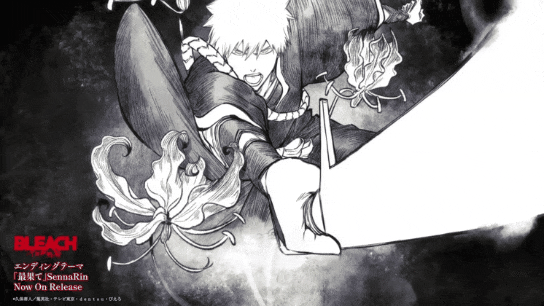
○●○●○●○●○●○●○●○●○●○●○●○●○●○
-> Rukia Kuchiki: Cherry Blossom


In the extended version of Bleach’s 31st ending theme song, Rukia Kuchiki is pictured with branches of the cherry blossom tree. The cherry blossom (Prunus serrulata) is also known as the Japanese cherry and is the unofficial national flower of Japan. Its Japanese name Sakura (桜) has been derived from the word “saku” which means “to bloom”. Its meanings in hanakotoba are “beauty of spirit”, grace, chastity, excellent beauty, gentleness, good education and the “transience of life”. In Japan, cherry blossoms are also a symbol of the “beauty of impermanence”—a Shinto concept better known as “mono no aware” (物の哀れ) as their falling petals are a reminder that although life is short, it is beautiful and should be savoured. The Japanese concept of “natsukashii” (懐かしい) likewise emphasizes the fleeting nature of cherry blossoms. This concept refers to the happy-yet-wistful nostalgia for times and things that we will never be able to go back to. We will never get to experience those moments again, just like the ephemeral cherry blossoms, which makes them even more significant. Cherry blossoms bloom from March to April which is the start of the new fiscal year in Japan. As a result of this cherry blossoms have also come to symbolise new beginnings and springtime. Given that feudal Japanese soldiers associated cherry blossoms with honour, discipline, and dignity—falling flowers were thought to be symbolic of a Samurai's death. In Western floriography, cherry blossoms herald the changing of the seasons and symbolise renewal and rebirth. They also symbolise the fleeting nature of life, tenderness, forgiveness, strength, beauty, love, confidence, peace, friendship and gratitude.
Rukia Kuchiki presents herself as a cool, restrained and stern warrior with firm convictions, however occasionally she breaks out of her shell and is kind. She tends to keep her emotions to herself, unless she is irritated, and finds it difficult to confide in others. This ties in with the cherry blossom’s meanings of grace, discipline, chastity, honour and dignity. Throughout the series, Rukia is constantly improving herself and growing not only in strength but also in confidence. This complements the cherry blossom’s meanings of confidence, strength, new beginnings, springtime and the changing of the seasons.
One of the cornerstones of Bleach's development is the connection between Ichigo and Rukia. Ichigo was able to protect his loved ones and become involved in the affairs of the soul society thanks to Rukia's initial transfer of her abilities to him. Since then, they have often come to each other's rescue and have developed a strong sense of gratitude, admiration, respect, and trust for one another. This ties into the cherry blossom’s meanings of strength, gratitude, friendship and love. Cherry Blossoms also tie into Rukia’s connection with her adopted brother, Byakuya and her sister, Hisana. Upon her death, as she looked at the first cherry blossoms of the season, Hisana asked Byakuya to find and protect Rukia as she regretted abandoning her years ago and felt unworthy of being her sister. This complements the cherry blossom’s meanings of forgiveness, love and the fleeting nature of life.
-> Uryū Ishida: Edelweiss
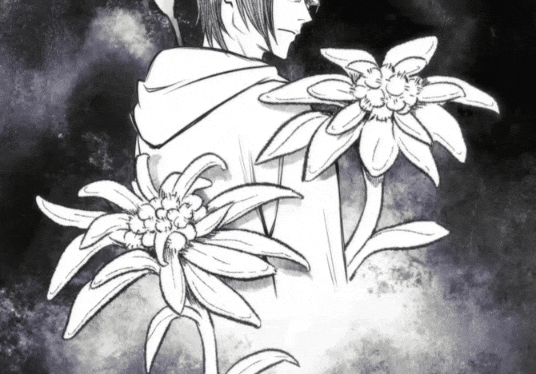
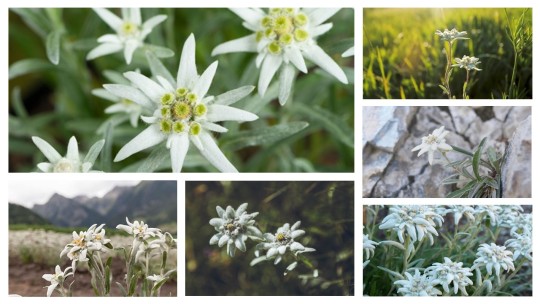
Edelweiss (Leontopodium nivale) is known as Ēderuwaisu (エーデルワイス) in Japanese. Its meanings in hanakotoba are are courage, power and precious memories. Its name translates from German to mean "noble white". Edelweiss is only found in white-blooming variants, unlike most other flowers. These reasons are the basis for the flower's symbolic connotations in Western floriography, which include innocence, purity, renewal and wishes for peace. The flower also represents integrity, excellence, elegance, noble courage, and boldness. Edelweiss flowers are well-adapted to high-altitude environments with frigid temperatures, harsh sunlight and low oxygen levels and have thus come to represent rugged beauty, strength, nobility, adventure and perseverance. The Edelweiss flower also represents intense devotion, sacrifice, care, and deep love. One of the most well-known stories about the edelweiss is about a young man who, in an act of bravery and love, risks his life to climb a mountain’s steep rocky face to gather edelweiss flowers for a woman.
Uryū Ishida is typically reserved, independent, and solitary—however, he tries to act cool when among other people. He has a strong sense of justice and is incredibly intelligent and chivalrous. These attributes greatly complement the Edelweiss’ meanings of integrity, excellence, elegance, boldness and noble courage.
-> Renji Abarai: Sasanqua Camellia

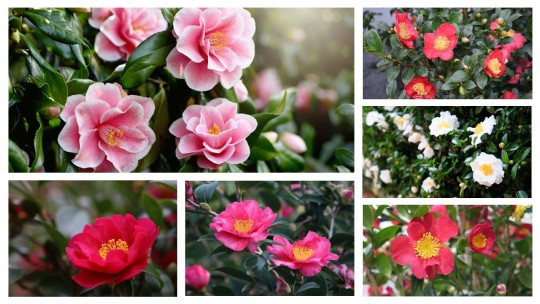
The flower Renji is pictured with is the sasanqua camellia (Camellia sasanqua) which is a species of camellia native to both China and Japan. It is a different species than the camellia pictured with Byakuya Kuchiki in this ending (Camellia Japonica). The Camellia Sasanqua and Camellia Japonica are primarily differentiated by the former’s earlier blooming season (early fall to early winter) as well as its smaller leaves and flowers. In addition to this, Camellia Japonica’s flowers fall whole, while Camellia Sasanqua's petals fall apart. The sasanqua camellia is known as the sazanka (山茶花) in Japan. Its meanings in hanakotoba are dedication and overcoming difficulties. In Japan, red sazanka represents humility and beauty, white sazanka represents charm and rejection and pink sazanka represents eternal love. In Western floriography, the sasanqua camellia represents desire and passion. It is said that the sasanqua's meanings of "overcoming difficulties" and "dedication" are derived from the fact that flowers bloom in early winter when the cold intensifies.
Renji Abarai comes across as dynamic, eccentric, brash, and stubborn, yet he is also incredibly dedicated and determined, willing to fight and die for his convictions. This ties in with the sasanqua’s meanings of passion, dedication and overcoming difficulties.
-> Yasutora Sado: Canna Lily
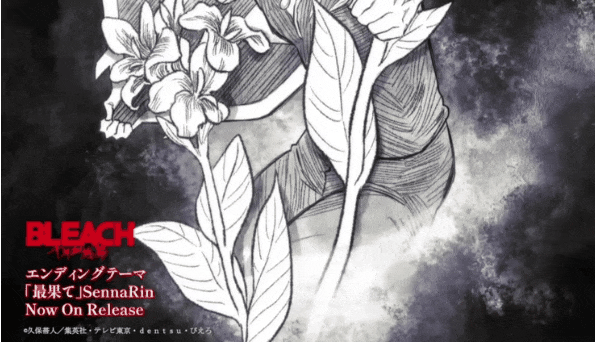

The Canna lily (Canna) is known as kanna (カンナ) in Japan. Its meanings in hanakotoba are passion, cheerfulness, eternity and delusion. In Western floriography, the canna lily holds the meanings of beauty, protection, purification glory, power, hope, confidence and confiding in heaven. The flower also holds the negative connotations of paranoia and suspicion. The vigour and beautiful appearance of its flowers, which can withstand the midsummer sun, are thought to be where its meanings of passion and cheerfulness are derived from.
Yasutora Sado is a quiet but incredibly brave, strong, and kind person who is also extremely loyal. These traits tie in with the canna lily’s meanings of passion, power, confidence and protection. Additionally, canna lilies originate from Latin America and tropical Asia and are exotic and vibrant with a rich cultural and symbolic history. This ties in with Sado’s half-Mexican heritage. In mythology, it is said that a demon who was envious of Buddha’s strong spiritual power threw a large boulder down on him from above. However, most of the rock shattered at Buddha’s feet without hitting him with only one fragment hitting his toe. Where the blood from his wound dripped onto the ground, a red canna lily blossomed, and the devil was swallowed by a rift of the earth due to its wrath. This legend is reminiscent of the scene where Sado was struck by a falling steel beam, which fractured but did not injure him as well as one of his fullbring powers, named “Left Arm of the Devil”.
-> Orihime Inoue: Glory-of-the-snow


Glory-of-the-snow (Scilla section Chionodoxa) is known as yukigeyuri (雪解百合) in Japan which translates to “snowmelt lily”. Its meanings in hanakotoba are purity, innocence, hope, modesty and compassion for friendships. It is also considered a sign of spring as it blooms when the snow melts. In Western floriography, it symbolizes glory, camaraderie and toughness.
Although she comes out as naive and ditzy, Orihime Inoue is better described as being sensitive, caring, amiable, funny, and optimistic. This strongly complements the glory-of-the-snow’s meanings of purity, innocence, hope and compassion for friendships. Furthermore, the star-shaped, six-petaled flowers of the glory-of-the-snow closely resemble Orihime's flower hairpins that her late older brother had given her.
○●○●○●○●○●○●○●○●○●○●○●○●○●○
[If you liked this post, check out part 1 (here) and part 3 (here)... Also, here's the link to my directory of other hanakotoba analysis posts (here)]
[P.S. Here is the continuation of my hanakotoba analysis on Bleach as promised... Thank you to @jushiro-ukitake & @elyonholic for reminding me about the flowers featured in the extended ending. Given that the flowers are black and white, it was difficult to identify them—so if I misidentified any of them, I apologize; I did my best. Also, I had to put the Gotei 13 squad flowers in a separate post because of Tumblr's image limit...]

#tried to keep this brief but ended up rambling lol#bleach#bleach anime#hanakotoba analysis#bleach hanakotoba#bleach florigraphy#hanakotoba#floriography#anime hanakotoba#anime analysis#bleach ed 31#bleach op16#anime openings#anime endings#anime music#anime#bleach tybw#bleach tybw part 1#bleach tybw part 2#bleach tybw anime#tybw#gotei 13#soul society#rukia kuchiki#kuchiki rukia#ichigo kurosaki#kurosaki ichigo#uryuu ishida#ishida uryuu#uryu ishida
66 notes
·
View notes